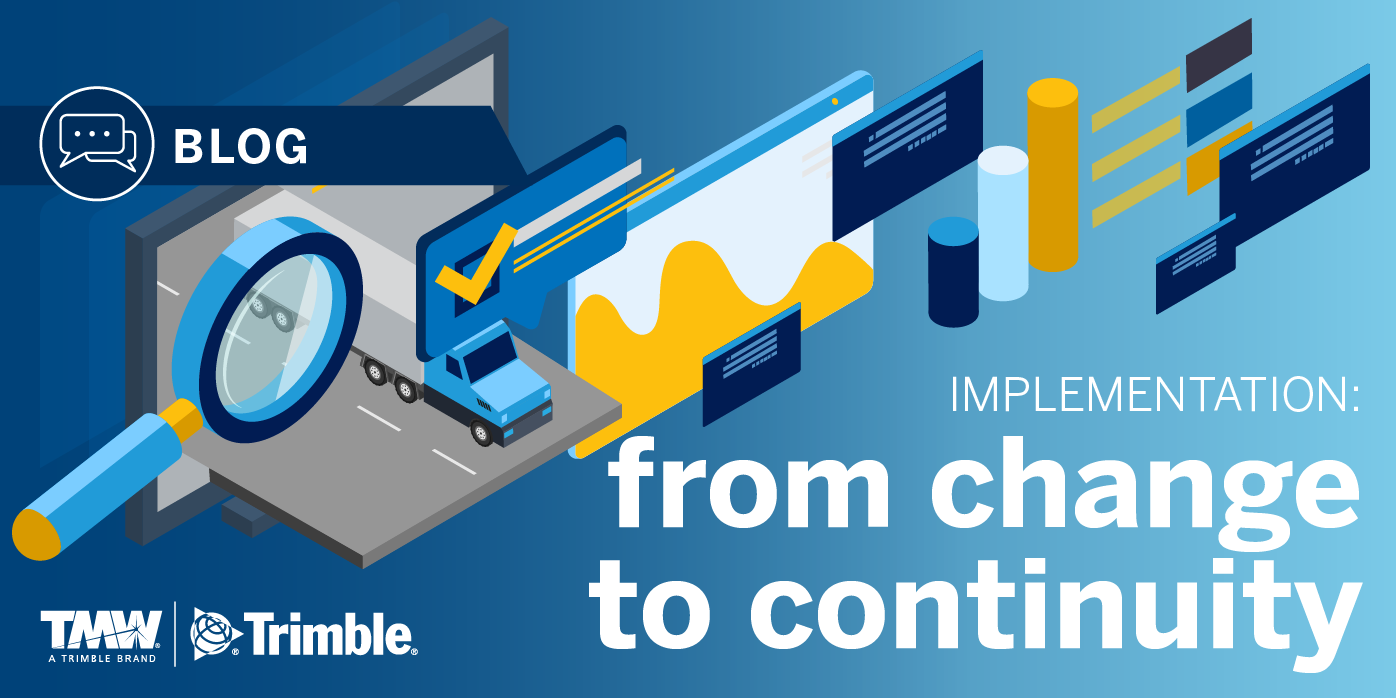
What’s your business endgame?
Perhaps it’s improved asset utilization and customer satisfaction, or you’ve decided to focus on compliance and ensure you’re fully on point with government mandates.
Most carriers would list all these points and add some of their own. Factor in owner and shareholder expectations, and it’s clear that, whatever the objective, fiscally successful companies need procedures that reduce unnecessary labor, drive revenue and have a universally positive effect on the bottom line.
This is where transportation management software (TMS) makes a profound imprint, overseeing the performance of (and guiding improvements within) each segment of the supply chain while safeguarding against the financial or reputational consequences that can result when businesses operate with reduced efficiency.
Installing a TMS is a decision advantageous to your finances, and achievable without hindering either your daily operations or customer-service function. But where to begin?
Change, Choice and Success
Change: Is Your Freight Management Team on Board?
Whether you’re the company owner making an executive decision or the information boss promoting TMS to your superiors, it’s essential that you prepare colleagues as to why this new technology is the wisest course of action. Employees should understand that TMS isn’t being implemented to eliminate their positions (a frequent concern, especially among long-term workers) but rather release them from often mundane tasks, redirecting their productivity to customer-facing, goal-oriented concerns. Remember: change needs communication to succeed.
Choice: Which Logistics Software Provider and Why?
Look for a TMS vendor that offers guidance, demonstrates methods to help you prosper, and remains committed to your success once the system goes live. Some topics to consider when interviewing potential solutions providers:
-
How many implementations (and their respective scopes) have been accomplished successfully within the past 12 months;
-
Ease of integration both internally and with third-party applications;
-
Does the provider follow industry best practices;
-
Can the system adapt without complication to changes in the business structure plus provide comprehensive monitoring and executive-status updates, and;
-
What manner of training and continuing education opportunities are offered.
Success: How Do We Reach Our Objective and Goals?
Make TMS a valuable extension of your business culture with a comprehensive but straightforward five-stage process:
Initiation – This consists of early collaboration between your own staff and your TMS team, role designation, data gathering, and resource assessment.
Modeling – Your project takes shape as instructions and guides are developed; this is the schematic for your TMS installation and the repository for all relevant data.
Finalization – The system transitions from documentation to a configured product, and brings all elements, such as order entry, accounting, and mobile support, together.
Validation – This critical step in the configuration process includes technical runs and training, to verify the system components are functioning without error and all users are conversant when operating the software.
Go Live - You’ve reached the ultimate step, which includes role-based, end-user training and practice along with wrap preparation. When the command to “go live” is issued, your TMS becomes a working reality.
How to Measure Success?
A TMS demonstrates its efficacy in steps. Immediately post-launch, your company should experience the benefits and terms that were established prior to installation, including:
-
The business concerns that led you to investigate TMS implementation have been met.
-
The project delivered on-time and within budget.
-
The system is ready to serve as a platform for add-ons and data exchanges.
-
User integration, both in-house and with third-party vendors was accomplished without obstacle.
-
Training was successful and continuing tech support is available.
Over time, you’ll gain additional insight for measuring your implementation’s success. Users may need a grace period as they engage the new system; as their familiarity increases so will their ability to achieve maximum optimization, allowing you to measure the system’s success against your early ROI projections.
Remember, even as competition within the transportation and freight management arena intensifies every day, so do the advantages of technology. TMS designed to your specifications will improve your business processes and keep your position strong within the industry.
Explore the world of successful implementation. Download your free guide, “Blueprint to a Successful TMS Implementation.”



